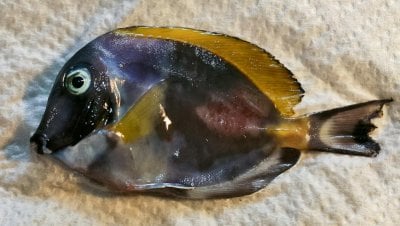My Powder Blue Tang contracted this clear film on the side of its body yesterday and later on it turned a little brown. This morning I woke up to a dead tang and it looked like there were patches of internal bleeding. Does anyone know what the tang could have contracted? I received it last week from Live Aquaria and it has been in a 40 gallon breeder as a quarantine tank.




















